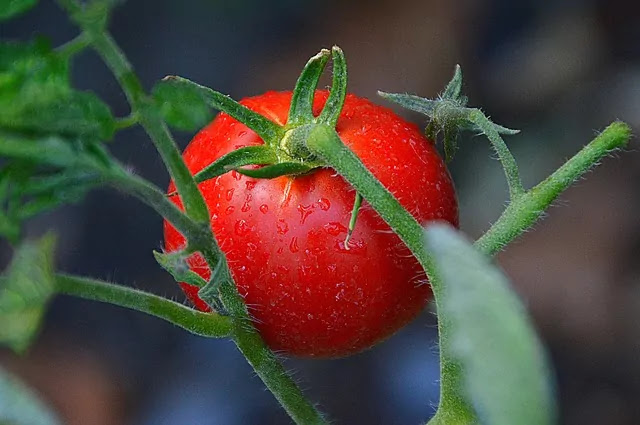 |
| Tomato Plant |
Leaf curl of tomato is a very serious disease that get transmitted through white fly. However in some cases curling of leaves doesn’t means that the plant is affected by tomato leaf curl virus.
Curling of leaves in tomato can also occur because of hot weather and consistent low moisture content in the atmosphere.
Curling of leaves in tomato due to hot and dry weather is called physiological leaf roll where curling of leaves is an adaptation in response to the environmental conditions to save water loss through leaves.
Symptoms of tomato leaf curl disease is a little different from physiological leaf roll and its control is generally not very effective if proper care and steps are not taken at the early stages of infection. Just like chilli leaf curl disease, curling of leaves in tomato plants spreads very fast from one plant to another plant.
Whether you are a farmer that is growing tomato in a acre of land or you are an active gardener growing tomato in several pots if this disease spreads in your field or pot and you don’t control it in the early stages then it can cause serious damage to your plants.
Plant scientists have considered it as one of the most destructive disease of tomato. That’s why it is necessary for you to read this article completely to save your plant from leaf curl of tomato.
What causes tomato leaf curl?
Symptoms of Tomato leaf curl
- Stunted appearance of the plants due to reduced size of internodes in new growth of the plant after being infected from leaf curl virus.
- Leaf margins curl upwards giving cup like structure to leaves.
- Yellowing between leaf veins, leaf size gets reduced and wrinkled.
- Flowering can occur even if the plant is affected from the disease but there will be no fruit formation.
Control of leaf curl virus of tomato
- Whether it a farm or a garden, keeping yellow sticky traps helps to control whitefly that can spread disease. In a agriculture farm keep 12 sticky traps per hectare. For a garden keep two to three sticky traps near tomato plant.
- Keep spraying neem oil periodically on foliar parts of the plant once after a week in late evenings to control the vector of this disease i.e. whitefly.
- If you are a farmer then you can raise barrier cereal crops around the field to prevent the vector from entering your farm land.
- If you practice inorganic methods of control then you can spray Imidachloprid 0.05% or Dimethoate 0.05% in the interval of every 15, 25, 45 days after transplantation to control the spread of whitefly that carry this hazardous disease.
- In case your plant gets infected then it is considered best to prune out infected parts of the plant and burn them at a distant place or you can bury them.





